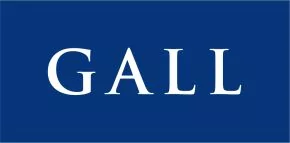The Government has announced the much-awaited implementation details of the ESS along with the penalties in case of breach of undertakings. Our most recent update on the details of the ESS can be viewed here.
Application details - the information required
The wage subsidies will be provided for 6 months in two tranches. The first tranche of the subsidies is from June to August 2020 and the second tranche is from September to November 2020. The first tranche of the ESS will open for online application on 25 May 2020 and will remain open until 14 June 2020. In order to facilitate smooth implementation, the employers are required to authorize the ESS processing agent (PricewaterhouseCoopers Advisory Service) to receive MPF records from their MPF trustee and to authorise MPF Trustees to provide the same to the agent.
Depending on whether the employers are participating in MPF Schemes or MPF exempted ORSO schemes, the following information and documents are required for the application:
- Business Registration Number or other registration numbers;
- Name of the MPF Trustee or the MPF-exempted ORSO Scheme, its MPF Exemption Number and ORSO Registration / Exemption Number (as the case may be);
- Name of the MPF Scheme (this should include all MPF schemes participated during the period between 1 December 2019 to 31 March 2020) and Scheme Registration / Participation Number;
- Number of eligible employees (i.e. employees whose wages are not fully funded by the Government) in March 2020;
- The bank account number of the employer and a scanned copy of the bank statement;
- For employers who have set up MPF exempted ORSO Schemes, a scanned copy of the exemption certificate issued by the Mandatory Provident Fund Schemes Authority must be uploaded;
- The payroll information of eligible employees (i.e. employees whose wages are not fully funded by the Government), including the wage of each employee in the "specified month" (a month between December 2019 to March 2020 to be nominated by the employer) are to be provided. It must be noted that employees whose wages are fully funded by the Government are not eligible for the subsidy.
It is important for the employers to be reminded that the name on the various documents and records must be the same as the employer's name.
Undertakings
In order to seek the subsidy under the ESS, employers are required to provide the following undertakings:
- Not to make redundancies during the subsidy period; and
- To spend all the wage subsidies on paying wages to the employees.
In respect of the first tranche, the employer will need to undertake that the number of employees on the payroll during the months of June to August 2020 cannot be fewer than the number of employees (paid or unpaid) in March 2020.
Claw back and Penalty
The details of the claw back and penalty as a consequence of breach of undertakings are set out below:
- With respect to the first tranche, if the employer fails to use all the wage subsidies received for a particular month during the three-month subsidy period to pay the wages of its employees in the same month, the Government will claw back the unspent balance of the subsidy. Therefore, the clawback amount for a particular month from June to August 2020 is the balance that remains after subtracting the total actual wages paid to the employees from the total subsidies received for that month.
- If the number of employees on the payroll in any one month of the subsidy period (June to August 2020) is lesser than the number of paid or unpaid staff in March 2020, the employer will have to pay a penalty to the Government. The penalty for a particular month during the subsidy period will be calculated as below:
Subsidies received for a particular month X Headcount reduction percentage X Penalty percentage
The headcount reduction percentage is the total number of paid and unpaid staff (as of March 2020) - total number of paid staff in a particular month divided by the total number of paid and unpaid staff (as of March 2020) X 100%
The penalty percentage is determined by the employer's total number of employees (whether paid or unpaid) in March 2020, i.e., the larger the number of employees, the higher the penalty percentage. Details are set out below:
| Total number of employees in March
2020 (whether paid or unpaid) |
Penalty Percentage |
|---|---|
| Less than 10 | 10% |
| 10 - 49 | 20% |
| 50 - 99 | 40% |
| 100 - 499 | 60% |
| 500 or more | 80% |
By way of example:
An employer has a total of 5 employees in March 2020 and it receives a total wage subsidy of HK$120,000 in the first tranche (i.e., HK$40,000 being the subsidy amount for each month). In June 2020, if the number of employees on its payroll reduces to 3, the headcount reduction percentage is 40% as compared to March 2020. The penalty percentage will be 10% as the number of employees in March 2020 was 5.
Applying the formula, the penalty will be:-
(HK$40,000 X 40%) X 10% = HK$1,600
Transparency and monitoring
The ESS secretariat and/ or the processing agent are authorised to verify the information submitted by the employers and conduct on-site checking as well. The Government has reiterated that it would announce the list of employers who have received subsidies, the total number of employees benefited and the total amount of subsidies. Any violations or abuse may be reported to relevant authorities. Any false statements or declarations or furnishing of false documents is liable to be prosecuted.
Comments
In a press release, the Secretary for Labour and Welfare stated that the penalty or claw back amount may be deducted in the second tranche instead of receiving the money back directly. However, for the second tranche, the Government is expected to ask employers to repay the money directly. We are awaiting further details in this regard. The Government will also implement monitoring and auditing mechanisms under the ESS.
The content of this article is intended to provide a general guide to the subject matter. Specialist advice should be sought about your specific circumstances.


